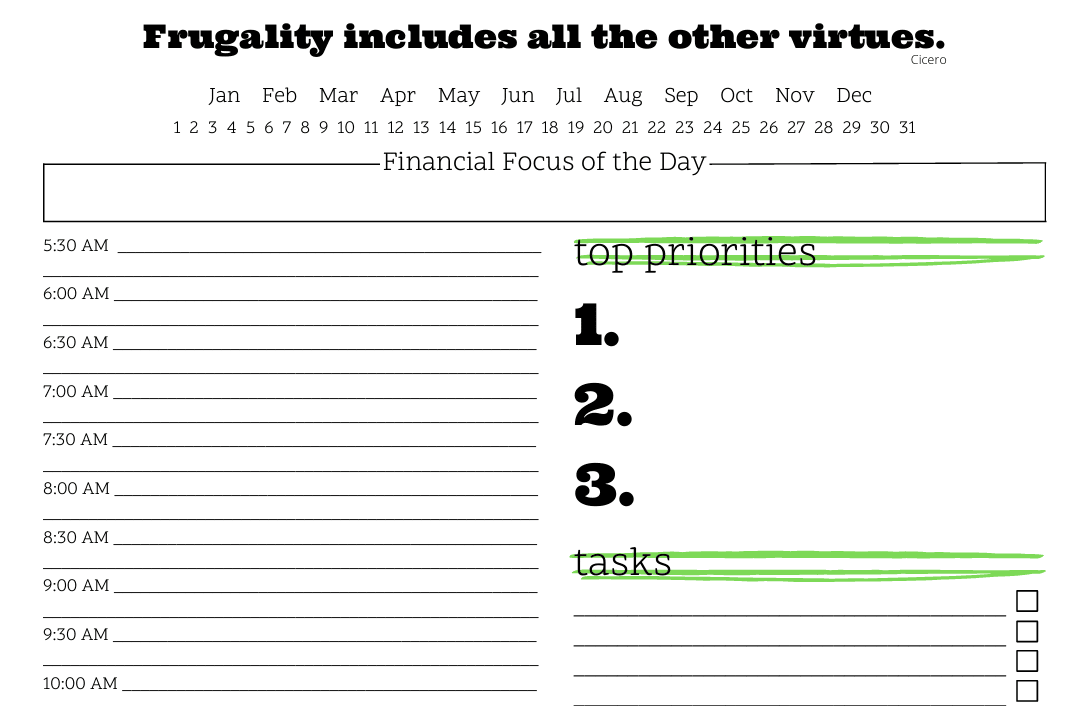This article may contain references to products or services from one or more of our advertisers or partners. We may receive compensation when you click on links to those products or services. Nonetheless, our opinions are our own.
The information presented in this article is accurate to the best of our knowledge at the time of publication. However, information is subject to change, and no guarantees are made about the continued accuracy or completeness of this content after its publication date.
- Choosing the Best Savings Account for Your Financial Goals
- Financial Goals and Priorities
- High-Interest Savings Options That Work for You
- Types of Savings Accounts
- Creating a Budget to Guide Savings
- Opening a Savings Account
- Saving Opportunities Through Employer Benefits
- Account Features and Digital Benefits
- Account Fees and Charges
- Finding a Local Branch or ATM
- Interest Rates and Premium Offers
- Comparing Checking and Savings Accounts
- Frequently Asked Questions
- Recommended Reads
Choosing the Best Savings Account for Your Financial Goals
Choosing the best savings account is a smart step toward achieving your financial goals. A high-yield savings account can grow your money faster with competitive interest rates, helping your hard-earned savings work for you. With so many banking options available, it’s essential to compare key features such as interest rates, minimum balance requirements, and account fees. When you align your savings account with your financial priorities, you set the foundation for a secure future in 2025 and beyond.
Financial Goals and Priorities
Start your savings journey with a clear view of your goals. Think about what you want to save for, whether it’s a vacation, a home, retirement, or an emergency fund. Categorizing your goals helps prioritize your savings and build better habits.
| Goal | Timeframe | Priority Level |
|---|---|---|
| Emergency Fund | Short-term | High |
| Vacation Fund | Medium-term | Medium |
| Retirement Savings | Long-term | High |
| Home Down Payment | Medium-term | Medium |
This clarity will keep you motivated and ensure your savings strategy stays aligned with your dreams.
High-Interest Savings Options That Work for You
Boosting your savings starts with choosing the right account. Even a small difference in interest rates can add up over time. Consider these popular options:
Online Savings Accounts
These accounts typically offer higher interest rates since they operate without physical branches. They are ideal for users comfortable with online-only banking.
High-Yield Savings Accounts
Offered by both online and some traditional banks, high-yield savings accounts deliver better interest than standard savings options, perfect for building emergency funds or short-term goals.
Credit Union Accounts
Credit unions often provide competitive rates and lower fees. If you qualify for membership, they can be a great alternative to big banks.
Guaranteed Investment Certificates
GICs are similar to CDs and are ideal if you don’t need immediate access to your funds. In return for locking your money for a fixed term, you earn higher interest.
| Account Type | Typical Interest Rate | Access to Funds |
|---|---|---|
| Online Savings Account | 2.00% – 4.50% | Instant |
| High-Yield Savings Account | 1.50% – 4.00% | Instant |
| Credit Union Account | 1.00%–3.00% | Instant |
| GIC | 3.00% – 5.00% | Locked for term |
Types of Savings Accounts
Different savings accounts are designed for different financial needs. Choosing the right one depends on your goals and lifestyle.
Canadian and Foreign Currency Savings Accounts
These allow you to save in CAD, USD, EUR, or other currencies. They are ideal for travelers, investors, or people with cross-border needs.
Savings Accounts for Kids
Youth savings accounts offer no-fee options and often include parental controls. They help children develop good money habits early.
Creating a Budget to Guide Savings
Budgeting is key to saving more. Track your income and spending to find where you can cut costs and redirect funds. Try the 50/30/20 rule:
- 50% for needs
- 30% for wants
- 20% for savings
Review and adjust your budget monthly to stay on track.
Voted "Best Overall Budgeting App" by Forbes and WSJ
Monarch Money helps you budget, track spending, set goals, and plan your financial future—all in one app.
Get 50% OFF your first year with code MONARCHVIP
Opening a Savings Account
Ways to Apply for a Savings Account
Apply in person, online, or by phone. You’ll need:
- Valid government-issued ID
- Proof of address
- Social Insurance Number (for tax reporting)
How to Apply for a Savings Account
Choose your preferred bank and account type. Follow the online application steps or visit a branch for assistance. Be sure to review the account’s terms and conditions before funding it.
Saving Opportunities Through Employer Benefits
- Direct deposit splits: Automate a portion of your paycheck into savings.
- Retirement plans: Employer-matched RRSP or 401(k) contributions are free money; don’t leave them on the table.
Review your benefits annually to maximize savings potential.
Account Features and Digital Benefits
- Online banking and mobile app access
- Automatic transfers
- Account alerts
- Tiered interest based on balance
- Budgeting tools
These features make it easier to manage your finances and track progress.
Account Fees and Charges
- Monthly fees
- Withdrawal limits
- Minimum balance penalties
Look for accounts with no-fee options or ways to waive fees by enrolling in e-statements or maintaining a set balance.
Finding a Local Branch or ATM
Most banks provide ATM locators and mobile tools. Access to a large ATM network helps avoid withdrawal fees. If in-person service matters to you, choose a bank with a strong physical presence.
Interest on savings is typically calculated daily and paid monthly or quarterly. Premium savings accounts offer higher rates for larger balances, so consider consolidating your funds for better returns.
Comparing Checking and Savings Accounts
- Checking Accounts: For daily spending, debit card use, bill pay, and unlimited transactions.
- Savings Accounts: For saving money, limited withdrawals, earns interest, not ideal for everyday use.
Use both strategically to manage your money better.
Frequently Asked Questions
What’s the difference between a TFSA and a regular savings account?
A TFSA allows your savings to grow tax-free, meaning you won’t pay tax on interest, dividends, or capital gains earned within the account. In contrast, a regular savings account earns taxable interest, which must be reported on your tax return. TFSAs also have contribution limits, while regular accounts do not. Depending on your goals, a TFSA might offer greater long-term benefits.
Can I open a savings account for my child?
Yes, most banks offer youth or minor savings accounts that can be opened by a parent or guardian. These accounts often have no monthly fees and may come with parental controls to monitor activity. Opening a savings account for your child is a great way to teach financial responsibility early. Some institutions even offer incentives or higher interest rates for young savers.
Do savings accounts charge fees?
Some savings accounts do charge monthly maintenance fees, especially if the minimum balance isn’t maintained. However, many banks offer no-fee savings accounts or waive fees if you meet certain conditions, like setting up direct deposit or choosing e-statements. It’s important to read the terms and compare offers to avoid unnecessary costs. Always consider fee structures alongside interest rates and features.
How do interest rates on savings accounts work?
Savings account interest rates are typically calculated on a daily balance and paid monthly or quarterly. The rate offered can vary by financial institution and account type. Some accounts offer tiered interest, which means higher balances may earn a better rate. Keeping track of how your rate is applied can help you optimize your returns over time.
Is my money safe in a savings account?
Yes, most savings accounts in Canada are insured by the Canada Deposit Insurance Corporation (CDIC) up to $100,000 per depositor per insured category. In the U.S., deposits are insured up to $250,000 by the FDIC. This means your money is protected even if the bank fails. Always confirm your bank is a member of the relevant deposit insurance agency.

Reviewed and edited by Albert Fang.
See a typo or want to suggest an edit/revision to the content? Use the contact us form to provide feedback.
At FangWallet, we value editorial integrity and open collaboration in curating quality content for readers to enjoy. Much appreciated for the assist.
Did you like our article and find it insightful? We encourage sharing the article link with family and friends to benefit as well - better yet, sharing on social media. Thank you for the support! 🍉
Article Title: Best Savings Accounts for 2025: Compare Rates, Features, and How to Apply
https://fangwallet.com/2025/10/20/best-savings-accounts-for-2025-compare-rates-features-and-how-to-apply/The FangWallet Promise
FangWallet is an editorially independent resource - founded on breaking down challenging financial concepts for anyone to understand since 2014. While we adhere to editorial integrity, note that this post may contain references to products from our partners.
The FangWallet promise is always to have your best interest in mind and be transparent and honest about the financial picture.
Become an Insider

Subscribe to get a free daily budget planner printable to help get your money on track!
Make passive money the right way. No spam.
Editorial Disclaimer: The editorial content on this page is not provided by any of the companies mentioned. The opinions expressed here are the author's alone.
The content of this website is for informational purposes only and does not represent investment advice, or an offer or solicitation to buy or sell any security, investment, or product. Investors are encouraged to do their own due diligence, and, if necessary, consult professional advising before making any investment decisions. Investing involves a high degree of risk, and financial losses may occur including the potential loss of principal.
Source Citation References:
+ Inspo
There are no additional citations or references to note for this article at this time.












































